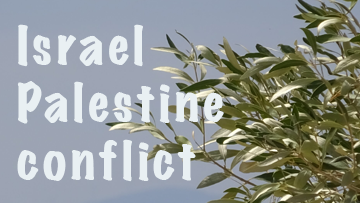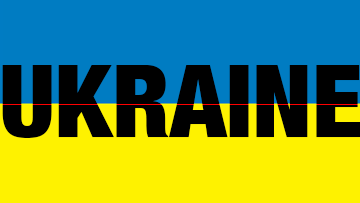The UN Security Council 26 May unanimously condemned the killing, of at least 108 people, including many children, in that Syrian town of Houla, clear indication of outrage at the massacre that the government and rebels blamed on each other.
Western and Arab nations opposed to Syrian President Bashar Assad put the blame for the deaths on the government. Damascus rejected the charge. The UN observer mission refused to link government shelling of the area to the deaths.
Not so the Security Council: “The Security Council condemned in the strongest possible terms the killings, confirmed by United Nations observers, of dozens of men, women, and children and the wounding of hundreds more in the village of (Houla), near Homs, in attacks that involved a series of government artillery and tank shellings on a residential neighborhood,” a non-binding statement said.
“Such outrageous use of force against civilian population constitutes a violation of applicable international law and of the commitments of the Syrian Government under United Nations Security Council Resolutions,” the statement continued.
Russian Foreign Minister Sergei Lavrov Monday said today that Moscow was deeply alarmed by the massacre in the Syrian town of Houla but that it was clear both Assad’s government and rebels were to blame.
“We are dealing with a situation in which both sides evidently had a hand in the deaths of innocent people,” Lavrov said at a news conference held jointly with visiting British Foreign Secretary William Hague.
Hague said Kofi Annan’s peace plan was “at the moment the only hope” for resolving Syria’s crisis and that Russia had an important role to play. Lavrov said he and Hague agreed that both the government and its attackers must be pressured to end the violence. The Russian foreign minister criticized nations which held a position saying that there could be no solution without Assad’s exit from power. Neither Russia nor China are seeking ‘regime change’, the call from the West and its allies.
The head of the UN observer force, General Robert Mood, in a video link briefing”did not link directly the (army’s) shelling with numbers of deaths.”
UN Secretary-General Ban Ki-moon has informed the media that the observers, “viewed the bodies of the dead and confirmed from an examination of ordnance that artillery and tank shells were fired at a residential neighborhood.” But Ban also said UN monitors observed shotgun wounds on some of the bodies, which could indicate close-range attacks by rebels, or could be the result of follow-up attacks by the army after it stopped shelling.
“While the detailed circumstances are unknown, we can confirm that there has been artillery and mortar shelling,” Ban said. “There have also been other forms of violence, including shootings at close range and severe physical abuse.”
China today also condemned the “cruel killings” of civilians, while insisting that peace mediator Kofi Annan’s efforts remained the most viable way to end the violence in Syria.
“China feels deeply shocked by the large number of civilian casualties in Houla, and condemns in the strongest terms the cruel killings of ordinary citizens, especially women and children,” Chinese Foreign Ministry spokesman Liu Weimin told a daily news briefing. “We call on all sides concerned in Syria to implement the relevant UN Security Council resolutions and Annan’s six-point proposal immediately, comprehensively and thoroughly.”
Liu stressed Beijing believed Annan’s efforts remained the best hope for stopping the violence.
“Annan’s mediation efforts and six-point proposal are a practical avenue and an important route for reducing the tensions in Syria and promoting a political solution there,” said Liu when asked whether China believed an alternative approach was needed.
Despite the inconclusive analysis by the UN team, Western governments launch strong verbal attack against the Assad regime.
British Ambassador Mark Lyall Grant reportedly said, “It seems quite clear that the massacre in Houla was caused by heavy bombardment, by government artillery and tanks.” “The fact is, it is an atrocity and it was perpetrated by the Syrian government.”
Russia, however, accused the United States and Europe of pursuing Libya-style regime change in Syria, where Assad has been trying to crush a 14-month-old insurgency that began peacefully but has become increasingly militarized.
Syrian Ambassador Bashar Ja’afari repeated his government’s denial, saying the massacre was committed by “armed terrorist groups”. “Women, children, and old men were shot dead. This is not the hallmark of the heroic Syrian army,” Foreign Ministry spokesman Jihad Makdesi told reporters in Damascus.
But Ban Ki-moon and Kofi Annan, the UN and Arab League envoys in Syria, accused the Syrian government of using artillery in populated areas. Which appears to be true enough but why would they do that? Very likely because of insurgent activity. The fault lies with both sides, that much is clear.
Iran has stated that the massacre was carried out in order to spread chaos and instability in Syria and to block the peace efforts. “We are certain that foreign interference, terrorist and suspicious measures which have targeted the resilient Syrian people are doomed to fail,” the website of the state television network, Press TV, stated, quoted Foreign Ministry Rabin Mehmanparast.
With Kofi Annan planning to visit Damascus soon, Russian Deputy UN Ambassador Alexander Pankin took a moment to add that the initial perpetrator that caused the massacre wanted to disrupt Annan’s visit. “We don’t believe the Syrian government would be interested in spoiling the visit of (Annan) … by doing something like that.”
Lebanon’s Hezbollah also expressed horror at the massacre in a statement released on Sunday, saying it “strongly condemns the massacre and deplores those who carried it out.”









